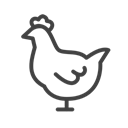
Digital Farming Solutions
Streamlining agricultural processes for greater efficiency
In an era marked by rapid technological advancements, every facet of life is being influenced and transformed, including the traditionally labor-intensive field of agriculture. The past few years have witnessed the rise of 'Digital Farming', a revolutionary approach that seamlessly marries technology with farming practices. Digital farming, a game-changer in modern agriculture, leverages cutting-edge technologies such as the Internet of Things (IoT), artificial intelligence (AI), remote sensing, and more to increase productivity and profitability, while minimizing the environmental impact.
Digital farming is no longer a luxury but a necessity, helping to navigate the increasingly complex farming landscape. It plays a crucial role in addressing numerous challenges, from climate change and population growth to resource conservation and food security. By bringing a data-driven approach to farming, digital solutions are creating a paradigm shift in the agricultural sector, resulting in improved efficiency, productivity, and sustainability.
In this article, we will delve deeper into the fascinating world of digital farming. We will explore the essence of digital farming solutions and their function in modern agriculture, investigate how they streamline agricultural processes, and highlight real-life case studies where these solutions have brought about transformational change. Furthermore, we will discuss the role digital farming plays in promoting sustainable agricultural practices, the challenges it faces, and how it might evolve in the future. So, let's embark on this journey to understand how digital farming is not just enhancing agricultural efficiency but is reshaping the contours of the farming landscape.
The Evolution of Digital Farming
The story of agriculture is a tale as old as civilization itself. Farming, one of the oldest professions in the world, has constantly evolved, adapting to changes in environment, society, and technology. The agricultural industry has experienced several significant shifts over time, moving from primitive hand tools to mechanized equipment, and now, to digital technology.
The first notable shift in farming came with the Agricultural Revolution, when our ancestors transitioned from hunter-gatherers to settled farming communities. Centuries later, the advent of machinery during the Industrial Revolution marked a significant change, drastically improving agricultural productivity. However, the game-changer in recent history has been the integration of digital technology into farming practices, leading to what we now call 'Digital Farming'.
Digital farming represents a paradigm shift in agricultural practices, moving beyond mere mechanization to a more integrated, efficient, and data-driven approach. It leverages a host of advanced technologies, including the Internet of Things (IoT), Artificial Intelligence (AI), remote sensing, and big data analytics, fundamentally transforming every aspect of farming.
In essence, digital farming revolves around three key components:
- Data Collection: Various sensors, drones, and satellite imagery are used to collect a vast array of data, including soil conditions, crop health, weather patterns, and more.
- Data Analysis: This data is then analyzed using AI and machine learning algorithms to derive meaningful insights and make precise predictions.
- Actionable Insights: The insights are used to make informed decisions and implement precise interventions, ranging from optimal planting times and precise irrigation to pest management and harvesting.
These components come together to create a more efficient and sustainable farming system, one that is responsive and adaptive to the ever-changing farming environment. Digital farming, thus, not only enhances productivity but also paves the way for a more sustainable future in agriculture.

Understanding Digital Farming Solutions
As the world becomes increasingly digitalized, the agricultural sector is no exception. Digital farming solutions are now at the forefront of modern agricultural practices, revolutionizing the way we grow food and manage farms. These solutions leverage digital technologies to streamline processes, increase productivity, enhance decision-making, and ultimately, make farming more sustainable and efficient.
One such pioneer in providing digital farming solutions is SKIOLD. We have a range of products and services that cater to the requirements of modern-day farmers, especially in pig farming. Let's delve into some of these solutions and their impact on agriculture.
Digital Management and Controls
Efficient farm management is crucial for success in today's farming industry, and SKIOLD recognizes this. Our digital solutions offers complete transparency and full traceability of all processes in pig farming, from feed and climate to animal performance.
The system provides a comprehensive overview of the entire farm or production facility. All production data is gathered in one management platform, making daily management and analysis simple and efficient. Real-time data enables the farmer to optimize every step of the workflow, monitor production, compare performance between production units, and forecast future production.
The management system also allows for effective animal welfare monitoring. Feeding controls ensure that animals are provided with the precise nutritional feed based on their needs, ensuring optimal health and growth.
SKIOLD Pig Management
SKIOLD Pig Management is a specialized solution that offers unparalleled transparency of performance on sows, weaner or finisher pigs. It allows for the registration of events, in-depth analysis of performance, surveillance of progress towards targets, and updates on resource consumption and deliveries. The platform can identify potential problems at any point in the life cycle and help the farmer solve them right away.
The system is divided into categories for sows and growing pigs. It is designed to provide a complete overview of the animal flow 24/7 and offer insights that lead to a more efficient, profitable, and sustainable production. The user-friendly interface provides production reports and key performance figures, leading to greater transparency and better operational quality.
SKIOLD Distriwin - Pig Feeding Management System
SKIOLD Distriwin is a highly advanced pig feeding management system designed to increase productivity while minimizing feed costs. It offers valuable insights into the performance of the farm feeding system for optimal efficiency and increased yield.
Distriwin is one of the most accurate systems in the market. It ensures the correct distribution of fresh, healthy feed for each pen, reducing feed waste and optimizing the supply of feed based on weight or age. Its unique alarm warning functions help to prevent silos from running empty and ensure that spare parts are replaced on time.
This advanced feeding system lowers bacterial growth, optimizes the growth of finishers and milk production in farrowing sows, and continually adjusts all daily feedings. It is a proven user-friendly system, continuously updated, and based on a secure platform that can integrate with other systems.
SKIOLD FlexMix Pro
FlexMix Pro by SKIOLD is an advanced solution designed to streamline the complexities of modern farming, particularly in the feed production sector. The system serves as a fulcrum for farmers, balancing the nuances of cost, feed conversion, animal welfare, and compliance with regulations. The commitment to efficiency and robustness is evident in the design of SKIOLD's complete feed milling solutions, which refine feed production significantly, promising a new echelon of business advancement while conserving energy and enhancing animal welfare.
As farmers grapple with a myriad of tasks, from business management to asset control, FlexMix Pro emerges as a beacon of simplification. It revolutionizes feed production by rendering it not just manageable but optimizable. The comprehensive system caters to a variety of scales, from small farm operations to large industrial plants, ensuring that no matter the global location or specific client requirements, there's a matching solution ready to elevate the business to new heights.
The user-friendly design of FlexMix Pro saves precious time each day. It guarantees exceptional feed quality, which translates into healthier animals, fewer illnesses, and better overall welfare. This is a direct outcome of farmers being able to utilize their own high-quality raw materials, tailor premixes and mixtures to specific needs, and produce feed on demand, ensuring freshness and reducing costs in comparison to purchasing commercial feed.
FlexMix Pro's precision in raw material dosing, coupled with its silo control features, provides unparalleled control over inventory, allowing for seamless stock planning and operation. The system predicts when supplies will run out, providing ample time for restocking without the stress of last-minute rushes.
The system's automation elevates it from a mere tool to a vital member of the team, freeing up human resources to focus on other valuable tasks. It allows for optimal planning, with the production process capable of running autonomously, delivering accuracy down to the last detail. Training new employees becomes a breeze with the system's intuitive interface, which doesn't require extensive technical know-how.
FlexMix Pro doesn't just adapt to the current needs of a farming operation; it's designed to grow with it. The modular design ensures that changes and updates to the system are cost-effective and minimally disruptive. Even software updates can often be conducted remotely, minimizing costs and downtime.
Transparency, control, and the capacity for detailed analysis are key benefits of the FlexMix Pro system. Real-time and historical data give a comprehensive view of operations, allowing for proactive management and efficient troubleshooting. This system's enhanced planning tools prevent stock shortages, enabling continuous, smooth production.
SKIOLD Visiovent PC
SKIOLD's VisioVent PC is a cutting-edge software designed to offer comprehensive support and control for the VisioVent ventilation systems used in modern farming operations. It's a technological lifeline that connects farmers directly to the expert support team at SKIOLD, regardless of where they are in the world or the size of their crew. With this innovative tool, the complexities of managing climate control units become simplified, as it allows for remote adjustments, monitoring of technical faults, and swift, remote troubleshooting.
The VisioVent PC empowers farmers by making climate units not just controllable but also intelligent, with the ability to remotely connect, manage, and receive support. This software extends its utility beyond mere control to become an essential support system. It offers an efficient way to maintain stable farm operations with a range of functions such as alarm limits, temperature curves, soaking parameters, and light control, all accessible via a user-friendly dashboard.
This software doesn't just react to issues; it provides a proactive support system with SKIOLD’s team ready to assist at the first sign of trouble. By enabling remote access to the system's controls, the VisioVent PC helps avoid production interruptions that can arise from technical errors or system crashes. The remote support capability not only saves time but also reduces the costs associated with having a technical team physically present on the farm.
Additionally, VisioVent PC comes with the option for SKIOLD SystemBackup, ensuring that settings for the VisioVent controllers are not only saved but can also be restored in an event of malfunction. The historical data display feature keeps track of operational changes, temperature fluctuations, and adjustments, which assists in understanding the system's performance over time.
In essence, the VisioVent PC software by SKIOLD stands out as the first of its kind in remote support technology, enabling a seamless and secure connection to climate control units, guaranteeing that the farmer’s operations remain uninterrupted, and their data is professionally managed and secured. It's not just a tool; it's a partnership that offers a safeguard for farmers, keeping their operations efficient, productive, and resilient.
In conclusion, SKIOLD's digital farming solutions offer an integrated, data-driven approach to farming, ushering in a new era of efficient and sustainable agriculture. By harnessing the power of technology, these solutions are transforming the way we farm, ensuring the farming industry remains resilient, sustainable, and capable of meeting the world's growing food needs.

Streamlining Agricultural Processes with Digital Farming Solutions
Digital farming solutions have come to the forefront of modern agriculture, revolutionizing the way we manage farms and cultivate food. By leveraging digital technologies, these tools are streamlining agricultural processes, enhancing decision-making, and making farming more efficient and sustainable.
1. Crop Monitoring and Management
One of the primary ways digital farming solutions are streamlining agricultural processes is through real-time crop monitoring and management. Advanced sensors, drones, and satellite imaging technologies can provide detailed insights into crop health, soil condition, and field weather conditions. These data can then be analyzed to enable proactive decision-making, thus helping farmers prevent potential crop diseases and pests, improve soil health, and optimize irrigation strategies.
2. Precision Farming
Precision farming involves using technology to enhance the accuracy and efficiency of farming practices. Digital farming tools like GPS technology, variable rate technology (VRT), and machine learning algorithms allow farmers to apply the right amount of inputs such as water, fertilizers, and pesticides at the right time and place. This results in reduced wastage, lower environmental impact, and higher crop yields.
3. Livestock Management
Digital farming solutions have also greatly improved livestock management. Wearable technologies for livestock can track health parameters, movement, and feeding patterns, leading to better animal health and welfare. In pig farming, for example, companies like SKIOLD offer advanced digital management systems that provide complete traceability of all processes in the farm, from feed and climate to animal performance.
4. Farm Data Management and Decision Support
Digital farming solutions facilitate data-driven decision-making by integrating various farm data sources into one comprehensive platform. These platforms can analyze data in real-time, provide meaningful insights, and support decision-making processes. They can identify potential problems and solve them right away, leading to more efficient, profitable, and sustainable production.
5. Automation and Robotics
Automation and robotics are playing an increasingly important role in agriculture. From automated tractors to robotic harvesters and drones for crop spraying, these technologies are making farming processes more efficient and less labor-intensive.
6. Supply Chain Transparency
Digital farming solutions can also provide full traceability from farm to fork, leading to greater supply chain transparency. This is crucial for maintaining food safety standards, ensuring compliance with regulations, and building trust with consumers.
In conclusion, digital farming solutions are streamlining agricultural processes in many ways. They offer an integrated, data-driven approach to farming, paving the way for a new era of efficient and sustainable agriculture. By harnessing the power of technology, these solutions are ensuring the farming industry remains resilient and capable of meeting the world's growing food demands.

The Role of Digital Farming in Sustainable Agriculture
Digital farming is not only transforming the way we farm but also creating a new pathway towards sustainable agriculture. By leveraging cutting-edge technologies and smart solutions, digital farming is driving efficiency, reducing environmental impact, and contributing to global food security. Let's delve deeper into how digital farming is fostering sustainable farming practices and the potential environmental and social benefits it offers.
1. Efficiency and Resource Optimization
Digital farming technologies allow farmers to optimize the use of resources such as water, fertilizers, and pesticides. Through precision farming practices, farmers can apply the right amount of resources at the right place and time, thereby reducing wastage and minimizing environmental impact. For example, GPS-guided equipment can ensure precise application of fertilizers, reducing runoff into local waterways and minimizing soil degradation.
2. Enhanced Crop Health and Yield
Through advanced crop monitoring and predictive analytics, digital farming helps in early detection of pests, diseases, and environmental stresses. This not only saves crops from potential damage but also reduces the need for chemical treatments, contributing to healthier crops and soils and safer food products.
3. Reduced Carbon Footprint
Digital farming can also significantly reduce the carbon footprint of agriculture. Automated and energy-efficient farming equipment, optimized fertilizer usage, and enhanced manure management practices all contribute to lower greenhouse gas emissions. Furthermore, digital farming solutions can help farmers implement climate-smart practices, such as cover cropping and conservation tillage, which can sequester carbon and mitigate climate change.
4. Sustainable Livestock Management
Digital farming also extends to livestock management. Advanced tracking systems can monitor animal health and welfare, reduce the need for antibiotics, and ensure optimal feeding strategies, all of which contribute to sustainable livestock farming. For instance, digital management systems like SKIOLD's can monitor all aspects of pig production, enhancing animal welfare, and improving the efficiency and sustainability of pig farms.
5. Enhancing Social Sustainability
Beyond environmental benefits, digital farming also enhances social sustainability. It can lead to improved food security by increasing agricultural productivity and resilience. Moreover, it can also create high-skilled jobs in rural areas, contribute to farmer's economic wellbeing, and reduce labor-intensive tasks, improving the quality of life for farming communities.
6. Ensuring Traceability and Transparency
Digital farming systems can provide complete traceability of food production processes, from farm to fork. This transparency helps ensure compliance with sustainable farming standards, builds trust with consumers, and can promote responsible consumption behaviors.
In conclusion, digital farming is a powerful tool for advancing sustainable agriculture. By optimizing resources, enhancing efficiency, reducing environmental impact, and contributing to social sustainability, digital farming is paving the way for a future where farming is in harmony with nature and supportive of thriving rural communities. Digital farming is not just a tool for today, but an investment in the future of sustainable food production.

The Future of Digital Farming
Digital farming is poised to play a transformative role in the future of agriculture. Emerging trends and advancements in technology are set to revolutionize farming practices, enhance productivity, reduce environmental impact, and contribute significantly towards global food security. Here's a glimpse into what the future may hold:
1. Advanced Automation and Robotics
Automation and robotics have already started reshaping the agricultural sector, and this trend is set to continue. From automated tractors to drones for crop monitoring and robotic systems for weeding, harvesting, and packaging, these technologies will increasingly take over labor-intensive and repetitive tasks. This will not only improve efficiency but also reduce the dependence on manual labor, which is often in short supply.
2. Precision Agriculture
Precision agriculture, enabled by technologies such as GPS, remote sensing, and IoT, will become even more precise. It will allow farmers to apply inputs like water, fertilizers, and pesticides only where and when they are needed, reducing waste and environmental impact. The use of artificial intelligence (AI) will enhance this precision further by enabling more accurate predictions and decision-making.
3. AI and Machine Learning
AI and machine learning will play an increasingly crucial role in analyzing the vast amounts of data generated by digital farming technologies. These technologies will enable real-time decision making and predictive analytics, helping farmers anticipate and respond to challenges such as pest infestations, disease outbreaks, and changing weather conditions.
4. Integration of Blockchain Technologies
Blockchain technology has the potential to bring transparency and traceability to the food supply chain. It can enable consumers to know exactly where their food comes from, how it was grown, and ensure fair compensation for farmers. This could drive a shift towards more sustainable and responsible farming practices.
5. Vertical and Indoor Farming
As urbanization increases and arable land becomes scarcer, vertical and indoor farming technologies will become more prevalent. These technologies use controlled environments to maximize yield per square foot and can be integrated into urban settings, reducing the distance food needs to travel from farm to fork.
6. Enhanced Farm Management Systems
As digital farming evolves, farm management systems will become more sophisticated, integrating various data sources into a single platform for more holistic farm management. This will help farmers make better-informed decisions, enhancing productivity, and sustainability.
In summary, the future of digital farming looks promising and dynamic. These advancements have the potential to significantly transform agricultural practices and address some of the most pressing challenges facing the sector, including labor shortages, environmental concerns, and the increasing demand for food. While these technologies will undoubtedly shape the future of farming, it is also essential to ensure that they are accessible and beneficial to all farmers, not just those with substantial resources. The future of digital farming is not just about technological innovation, but also about inclusivity and sustainability.

Conclusion
Digital farming solutions represent a pivotal shift in the realm of agriculture, bringing about greater efficiency, enhanced productivity, and more sustainable practices. The transformative power of these technologies is already being seen in the agricultural industry, with companies like Skiold leading the way.
From the evolution of digital farming that has brought about more accurate and timely data to the implementation of these advanced technologies that streamline agricultural processes, the landscape of farming is undergoing a significant change. Digital farming also plays an integral role in sustainable agriculture, offering numerous environmental and social benefits such as optimized resource use, reduced environmental footprint, and improved animal welfare.
However, it's also crucial to acknowledge and address the challenges associated with the adoption of these technologies. Issues like the digital divide, high initial investment costs, and the need for technical skills need to be addressed to ensure widespread and equitable adoption of digital farming solutions.
Looking forward, the future of digital farming appears bright and holds much promise. Advancements in areas such as automation, AI, blockchain technology, and vertical farming are set to revolutionize the agricultural sector and contribute significantly to global food security.
We encourage all stakeholders in the agricultural industry, from farmers and agribusinesses to policymakers and researchers, to explore and embrace digital farming solutions. The future of farming is digital, and the journey towards this future has already begun.


 English
English
 Danish
Danish
 French
French
 Swedish
Swedish
 Vietnamese
Vietnamese
 Russian
Russian
 Spanish
Spanish
 German
German
 English
English





